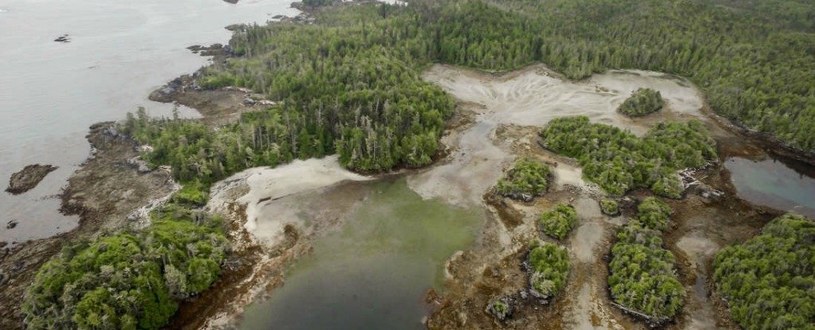OP
OP
Deleted member 427
Guest
Dobra, mam już co chciałem: https://tepetelegrams.wordpress.com...s-the-fox-say-and-what-the-crane-the-aurochs/
Taa, najpierw ja piszę post ze wzmianką o gruzie w piramidzie, potem Ty na niego odpowiadasz, następnie tworzę długą wypowiedź, na którą odpisujesz w połowie i deklarujesz, że znajdziesz odpowiedź na trudniejsze pytania później. Po jakimś czasie dopytuję się o odpowiedź, ale wymigujesz się z powodu gruzu, mimo że wcześniej Ci ta kwestia nie przeszkadzała aby mi odpisać. Sam musisz przyznać, że wygląda to jakbyś wycofał się rakiem. Serio nawet jeśli napisałbym głupotę to co Ci szkodzi odpowiedzieć na kilka poważnych wątpliwości? I to tak poważnych, że pozostawione bez kontrargumentów w zasadzie niszczą hipotezy o zaginionych cywilizacjach. I przy okazji powtarzam, że pisałem o gruzie i zaprawie wsypywanych aby uzupełnić luki, a nie że piramidy są usypane z gruzu. Możesz poczytać o tym nawet na Wikipedii, a jeśli wolisz poważniejsze źródło to Mark Lehner, The Complete Pyramids.Zrezygnowałem z dalszej dyskusji po tym jak przeczytałem, że piramidy są usypane byle jak z gruzu.
A taki, że jeśli człowiek wychodzi poza swoją specjalizację i pisze teksty mające zrewolucjonizować obcą mu dziedzinę wiedzy to prawie zawsze się kompromituje. Nawet bardzo inteligentni ludzie są ekspertami tylko w wąskim zakresie i bez gruntownego przeszkolenia nie będą mieli nic do powiedzenia. A brak wiedzy u tych dwóch inżynierów jest bardzo widoczny skoro olali prace archeologów, a za to cytowali foliarza. Ale tak często bywa w archeologii i historii - co i rusz jakiś inżynier albo fizyk myśli, że wnosi coś wartościowego, a często nie ma pojęcia o podstawach.A Steven Pinker to lingwista i psycholog, co nie przeszkodziło mu napisać bestsellera z kryminologii i historii. Co to w ogóle za poroniony argument?
To i to:Dobra, mam już co chciałem: https://tepetelegrams.wordpress.com...s-the-fox-say-and-what-the-crane-the-aurochs/



Ja... Ja tylko mówię że cała budowla jest imponująca. Tak po prostu.Zajrzałem do linka i zobaczyłem piękny przykład manipulacji stosowanej przez foliarzy. Widzimy taki tekst:
Mainstream scholars tell us that the ancient caves were built sometime around the fifth and tenth centuries AD, but many others disagree suggesting the caves are much older.
H.P. Blavatsky and M.K. Dhavalikar are just some of the authors who agree that we are looking at serious ancient stuff. M.K. Dhavalikar, who was a notable Indian historian, and archaeologist, author of the book ‘Ellora’, suggests the shrines and the Kailasa temple were not excavated at the same time but are the result of a construction process that belongs to a number of different periods.
Helena Bławatska była tylko okultystką i medium, ale za to Dhavalikar to prawdziwy naukowiec, więc posiada autorytet. Skoro historyk i archeolog nie zgadza się z oficjalnymi szacunkami to coś może być na rzeczy. I jak wynika z kontekstu według niego ruiny są starsze o setki bądź tysiące lat. Sprawdziłem w Wikipedii i przeczytałem to:
M. K. Dhavalikar (1982) analyzed the architecture of the temple, and concluded that the major part of the temple was completed during the reign of Krishna I, although he agreed with Goetz that some other parts of the temple complex can be dated to the later rulers. According to Dhavalikar, the following components were completed by Krishna: the main shrine, its gateway, the nandi-mandapa, the lower-storey, the elephant-lion frieze, the court elephants and the victory pillars.[11]Dhavalikar admits that the most important sculpture of the temple, which depicts Ravanashaking the Kailasa mountain, appears to have been built after the main edifice. This sculpture is considered as one of the finest pieces of Indian art, and it is possible that the temple came to be known as Kailasa after it. Dhavalikar theorizes that this sculpture was carved around 3-4 decades after the completion of the main shrine, on the basis of its similarity to the tandava sculpture in the Lankeshvar cave.[12] H. Goetz dated this relief to the reign of Krishna III.[10] Like Goetz, Dhavalikar attributes some other structures in the temple complex to the later rulers. These include the Lankeshvar cave and the shrine of the river goddesses (possibly constructed during the reign of Govinda III).[13] Dhavalikar further theorizes that the excavation of the Dashavatara cave, which began during the reign of Dantidurga, was completed during the reign of Krishna I. This explains the similarities between the sculptures in the two caves
Dla jasności Krishna l panował w ósmym wieku naszej ery. Typowe manipulacyjne podpieranie się autorytetem. Reszta tekstu to bzdury o zaawansowanych cywilizacjach sprzed tysięcy lat (nie napisali sprzed ilu, ale podejrzewałbym 12 tys.) i o tym jak to rzekomo niemożliwy jest transport i obróbka wielotonowych bloków skalnych.
Wironin napisał:i o tym jak to rzekomo niemożliwy jest transport i obróbka wielotonowych bloków skalnych.